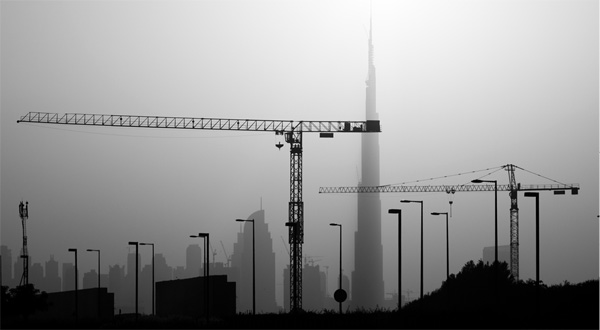Saeed Alabbar, Director at AESG, shares his insights into what he believes will be the top sustainability trends for the construction industry in the region in 2013.
Saeed Alabbar, Director at AESG, an energy and sustainability consultancy in the Middle East, shares his insights into what he believes will be the top sustainability trends for the construction industry in the region in 2013.

The Middle East has often been criticised for its excessive consumption of resources as was confirmed by a 2012 Living Planet Report1, which named Qatar, Kuwait and the United Arab Emirates as the top three countries having the largest per capita ecological footprints in the world.
The situation is ripe for change, and developers across the region are now giving a serious thought to the impact of sustainability and green construction concepts on their profits and cost savings targets.
After a steady growth through 2012, the Middle East construction market looks set to once again regain the momentum of the pre-recession era. Countries across the Middle East, particularly the Kingdom of Saudi Arabia, Qatar and the UAE, have announced plans for major development undertakings. Experts predict USD 4.3 trillion worth of construction projects coming up across the MENA region over the next decade, representing a growth of 20% through 2020.
Now taking centre stage in discussions within the industry is the issue of sustainable construction. As far as new projects are concerned, there is still a lot of work that needs to be done to translate good sustainable designs into sustainable buildings. For a number of projects in the region, lack of quality control in construction or poor commissioning have resulted in great intentions on paper not being transformed into reality.
Whilst an increasing number of facility and building owners are looking to manage their energy and water consumption more effectively, this only accounts for a fraction of the existing building stock in the region.
Sustainability – the mantra
While sustainability has been a buzz word in the industry for a number of years, we are now definitely witnessing a genuine drive for new development projects in pursuing increasingly higher levels of sustainability. This is driven partly by regulation, and also by the fact that developers realising that sustainability offers a genuine opportunity to increase the value of their assets and also ensure that their assets are future-proofed. Commercial, as well as private buildings, will begin to incorporate green design elements in their construction in order to limit the amount of damage they do to the environment as well as to be as energy-efficient as possible.
Continued growth in public sector projects
Throughout the region, there is a commitment from governments to invest in social and commercial infrastructure. In order to increase the financial efficiency of these projects, both during construction and operation, government agencies are increasingly turning to sustainability and energy efficiency as a means of reducing the lifecycle costs of these buildings.
The results of these efforts have led to reductions in government spending on utility bills and infrastructure, which ultimately translate to freeing up revenue for more “constructive” purposes. As massive infrastructure projects are due to get underway during 2013, developers will be keen to look at innovative means to reduce the energy impact of these construction projects, both during construction and operational phases.
Commissioning – the new buzzword
In the Middle East, traditionally, commissioning of buildings has not been carried out effectively, which has resulted in many buildings performing poorly during operation and, therefore, requiring frequent maintenance.
However, judging by the feedback right through 2012, we are likely to see a growing trend of a number of developers choosing to utilise commissioning agents on projects to ensure a more effective transition between design, construction and operation stages of projects. Commissioning agents will be increasingly called upon to identify potential savings in capital costs for clients by better optimising designs and streamlining the testing and commissioning processes, such that building owners receive a better functioning building at the start of operation.
Time FOR energy retrofit projects
Due to recent hike in utility tariffs, the economic downturn and a greater focus on energy and sustainability issues, facility owners and operators are paying greater attention to their utility bills. Conducting detailed energy audits of facilities has shown that buildings can save approximately 20% of their energy bill through low- to no-cost measures alone, that all pay back within 12 to 18 months with an Internal Rate of Return (IRR) upwards of 40%. As far as important decisions go, during 2013, building owners are likely to realise the need for investing in low-cost measures to reduce their energy consumption.
While these trends only scratch the surface of green building initiatives, they are indicative of the positive direction in which the industry is heading. The year 2013 looks poised to be a year for massive growth of the green building market, and the onus is now upon facility owners, managers, architects and design teams to “think green”, lest they should find themselves in the red.
The writer is Founding Managing Director AESG. He may be contacted at s.alabbar@aesg-me.com
REFERENCES
1 http://awsassets.panda.org/ downloads/lpr_2012_summary_ booklet_final_120505__2_.pdf
Copyright © 2006-2025 - CPI Industry. All rights reserved.